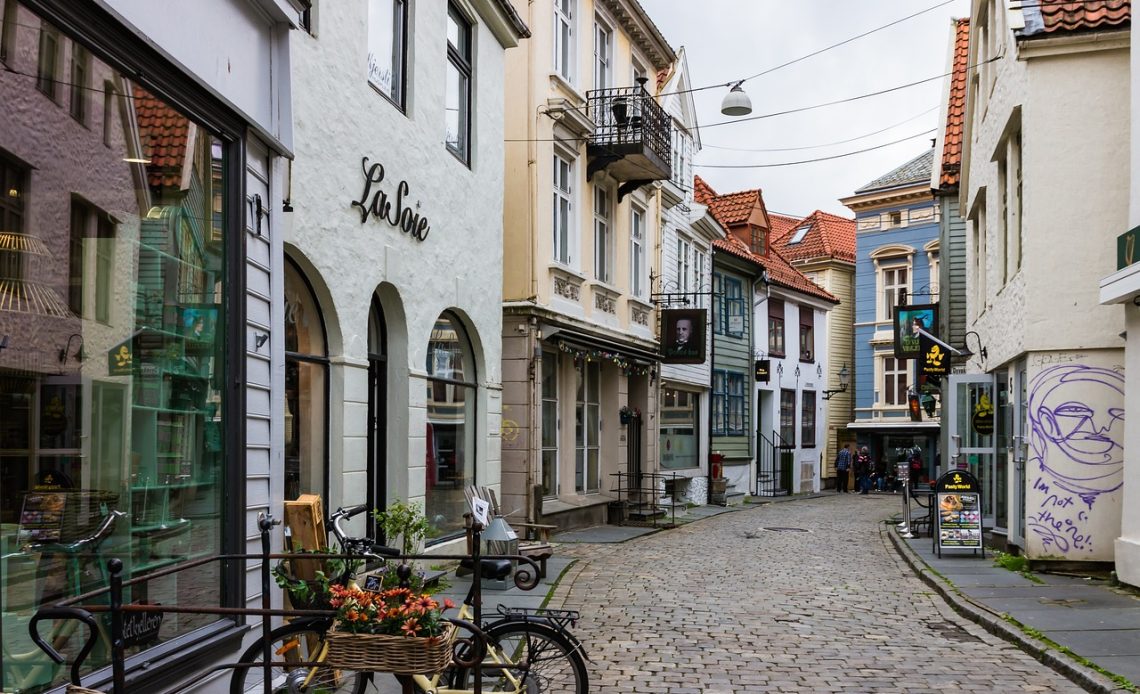
Introduction to Norway’s captivating beauty
Norway is a land of unparalleled natural beauty, steeped in rich history and vibrant culture. From the stunning fjords that carve through its rugged coastline to the awe-inspiring Northern Lights that dance across the sky, it is truly a destination that captures the heart and imagination of every traveler. As you embark on your journey to uncover the best time to visit Norway, it’s important to first appreciate the diverse and captivating experiences that this Scandinavian gem has to offer.
The land of the Vikings is not only famous for its breathtaking landscapes, but also for its warm and welcoming people. Norwegians are known for their friendly and hospitable nature, eager to share their culture and traditions with visitors. This, combined with the country’s rich history and charming cities, ensures that a trip to Norway is an unforgettable experience that leaves you longing for more.
In this article, we will delve into the various aspects of Norway’s climate, seasons, and events, as well as offer practical tips for planning your dream vacation. So, whether you’re seeking adventure, relaxation, or a combination of both, let us help you uncover the best time to visit Norway for a truly memorable experience.
Understanding Norway’s climate and seasons
Before exploring the wonders of each season, it’s crucial to gain an understanding of Norway’s unique climate. Due to its location in the far north of Europe, Norway experiences a wide range of weather conditions, with distinct variations in temperature, daylight hours, and precipitation depending on the region and time of year.
In general, the coastal areas enjoy mild temperatures due to the warming effect of the Gulf Stream, while the inland regions experience more extreme weather with colder winters and hotter summers. Precipitation also varies, with the west coast receiving the most rainfall, while the eastern and northern regions are generally drier.
Norway’s climate can be broadly divided into four seasons: spring, summer, autumn, and winter. Each season offers its own unique experiences, attractions, and challenges, making it essential to carefully consider your personal preferences and interests when determining the best time to visit Norway.
The magic of Norway’s Midnight Sun and Polar Nights
One of the most fascinating aspects of Norway’s climate is the phenomenon of the Midnight Sun and Polar Nights. Due to its location above the Arctic Circle, the northern regions of the country experience continuous daylight during the summer months, with the sun never setting below the horizon. This is known as the Midnight Sun, and it provides a magical backdrop for unforgettable adventures.
On the flip side, during the winter months, the sun never rises above the horizon in these same regions, resulting in a period of darkness known as the Polar Nights. While this may seem daunting, it also creates the perfect conditions for witnessing one of nature’s most incredible spectacles: the Northern Lights.
As you plan your trip, consider whether you’d like to experience the enchanting Midnight Sun or the mysterious Polar Nights, as this will greatly influence your decision on the best time to visit Norway.
Spring in Norway: A time of rejuvenation
Spring is a time of renewal and rejuvenation in Norway, as the days grow longer, temperatures begin to rise, and the landscape comes to life with blossoming flowers and vibrant greenery. Typically lasting from April to June, spring is an ideal time to visit Norway for those seeking a quieter, more relaxed experience.
During this season, you can enjoy the beauty of nature as you stroll through lush forests, hike along picturesque trails, or explore charming coastal villages. Wildlife enthusiasts will also be delighted by the opportunity to observe migratory birds returning to their summer breeding grounds, as well as the emergence of other species from their winter hibernation.
One potential drawback of visiting Norway in the spring is the unpredictable weather, with sudden changes in temperature and rainfall possible. However, with fewer crowds and lower prices, spring offers a wonderful opportunity to experience the country’s natural beauty in a more peaceful and tranquil setting.
Summer in Norway: The peak season for outdoor adventures
Summer is undoubtedly the most popular time to visit Norway, and for good reason. With warm temperatures, long days, and the magical Midnight Sun, this season offers countless opportunities for outdoor adventures and exploration. From June to August, Norway’s stunning landscapes come alive with an abundance of activities, such as hiking, cycling, kayaking, and fishing.
One of the highlights of the summer season is the chance to explore Norway’s world-famous fjords. These majestic bodies of water, surrounded by towering cliffs and cascading waterfalls, offer a breathtaking backdrop for unforgettable experiences, whether you’re taking a scenic cruise or embarking on a challenging hike.
While summer is the best time to visit Norway for outdoor enthusiasts, it’s important to bear in mind that it’s also the busiest season, with higher prices and larger crowds. However, with careful planning and preparation, you can still enjoy an incredible Norwegian adventure during this peak period.
Autumn in Norway: A symphony of colors
As the summer fades and the days grow shorter, Norway’s landscape is transformed into a vibrant tapestry of red, orange, and gold. Autumn, lasting from September to November, is a truly magical time to visit Norway, as the country’s vast forests and countryside are illuminated by the fiery hues of the changing foliage.
This season offers a more peaceful and serene experience, with fewer tourists and lower prices compared to the summer months. It’s the perfect time to immerse yourself in Norway’s natural beauty, as you hike through colorful forests, explore tranquil lakes, and marvel at the dramatic coastline.
In addition to the stunning scenery, autumn is also an excellent time to visit Norway for wildlife enthusiasts, as it’s the prime season for spotting moose, reindeer, and other native species. However, as with spring, the weather can be unpredictable during this season, so it’s important to be prepared for sudden changes in temperature and precipitation.
Winter in Norway: A wonderland of snow and Northern Lights
For those seeking a truly unique and unforgettable experience, winter in Norway is simply magical. From December to February, the country is transformed into a snow-covered wonderland, offering a wide range of exciting activities and attractions. From skiing and snowboarding on world-class slopes to dog sledding and snowshoeing through pristine wilderness, there’s no shortage of thrilling adventures to be had.
Perhaps the most iconic aspect of winter in Norway is the chance to witness the mesmerizing Northern Lights. This awe-inspiring natural phenomenon, caused by the interaction of solar particles with the Earth’s magnetic field, is best seen in the northern regions of the country, particularly during the Polar Nights.
While winter is undeniably a fantastic time to visit Norway, it’s important to keep in mind the challenges that this season presents, particularly in terms of weather and daylight hours. However, for those willing to brave the cold and darkness, the rewards are truly extraordinary.
Comparing the seasons: Pros and cons for travelers
Now that we’ve explored the unique experiences offered by each season, let’s take a closer look at the pros and cons for travelers:
- Spring: The main advantages of visiting Norway in spring are the quieter atmosphere, lower prices, and the opportunity to witness the natural landscape coming to life. The main drawback is the unpredictable weather.
- Summer: The benefits of summer in Norway include the Midnight Sun, warm temperatures, and a wide range of outdoor activities. The downsides are the larger crowds and higher prices.
- Autumn: The pros of visiting Norway in autumn are the stunning fall foliage, lower prices, and fewer tourists. The main disadvantage is the unpredictable weather, similar to spring.
- Winter: The key advantages of winter in Norway are the Northern Lights, snow-covered landscapes, and unique winter activities. The main challenges are the cold temperatures and limited daylight hours.
Important events and festivals in Norway
As you plan your trip, it’s also worth considering the various events and festivals that take place throughout the year in Norway. These celebrations showcase the country’s rich culture and traditions, providing a unique and immersive experience for visitors. Some notable events include:
- St. Olav Festival (July): This annual event in Trondheim commemorates the life of Norway’s patron saint, with a wide range of cultural activities, performances, and exhibitions.
- Bergen International Festival (May-June): This prestigious arts festival features a diverse program of music, dance, theater, and visual arts, attracting performers and visitors from around the world.
- Midnight Sun Marathon (June): Held in the city of Tromsø, this unique event offers participants the chance to run a marathon under the glow of the Midnight Sun.
- Polar Jazz Festival (January-February): Hosted in the Arctic town of Longyearbyen, this cozy and intimate jazz festival is the world’s northernmost, offering a truly unique experience for music lovers.
- Christmas markets (December): During the festive season, Norway’s cities and towns come alive with charming Christmas markets, offering a wonderful opportunity to experience the country’s holiday traditions and sample delicious local treats.
Tips for planning your unforgettable Norwegian adventure
Finally, as you prepare for your trip, keep the following tips in mind to ensure a smooth and enjoyable experience:
- Consider your personal interests and preferences when determining the best time to visit Norway, as each season offers unique experiences and attractions.
- Be prepared for unpredictable weather, particularly during the spring and autumn months. Pack layers and waterproof clothing to ensure your comfort and safety.
- Book accommodation and transportation well in advance, especially during the busy summer season, to secure the best deals and availability.
- Familiarize yourself with local customs, etiquette, and language to enhance your cultural experience and foster positive interactions with locals.
- Don’t forget to factor in festivals and events when planning your visit, as these can provide a unique and enriching insight into Norwegian culture and traditions.
Conclusion: Making the most of your trip to Norway
In conclusion, the best time to visit Norway ultimately depends on your personal interests, preferences, and priorities. Each season offers its own unique experiences and attractions, from the enchanting Midnight Sun and vibrant fall foliage to the mesmerizing Northern Lights and snow-covered landscapes.
By taking the time to carefully consider your options and plan accordingly, you can ensure an unforgettable Norwegian adventure that will leave you with memories to last a lifetime.



